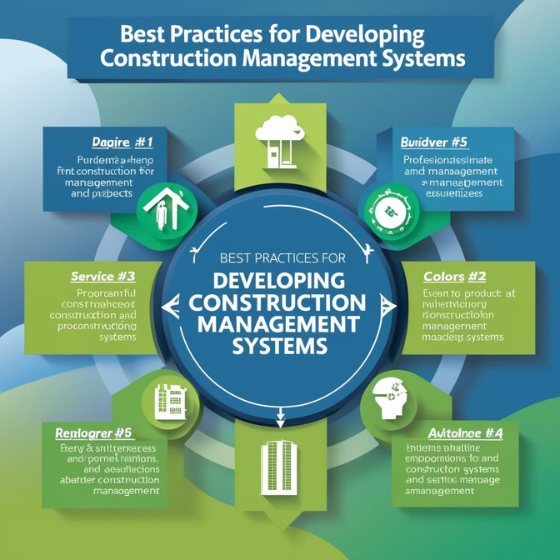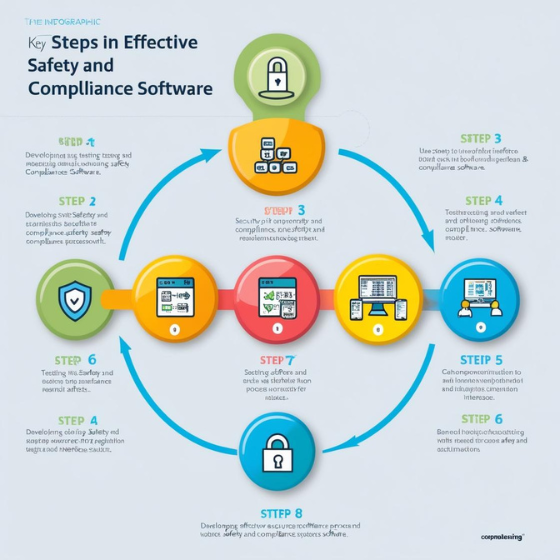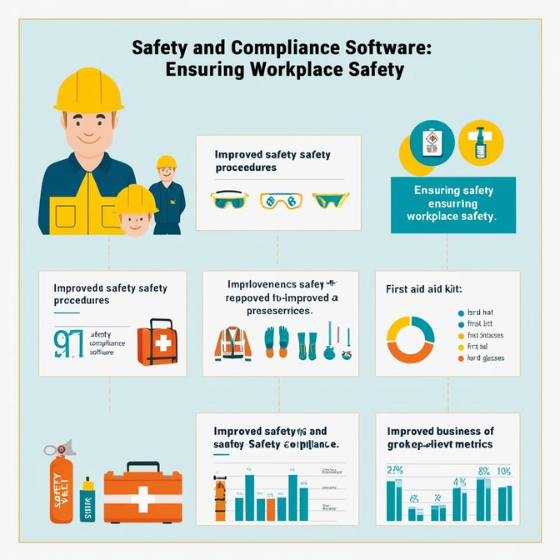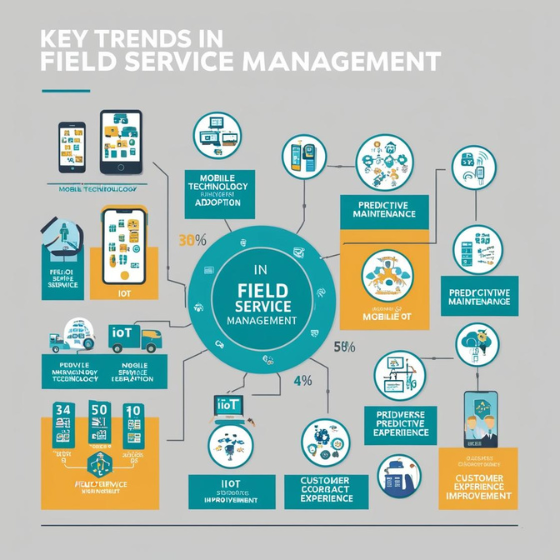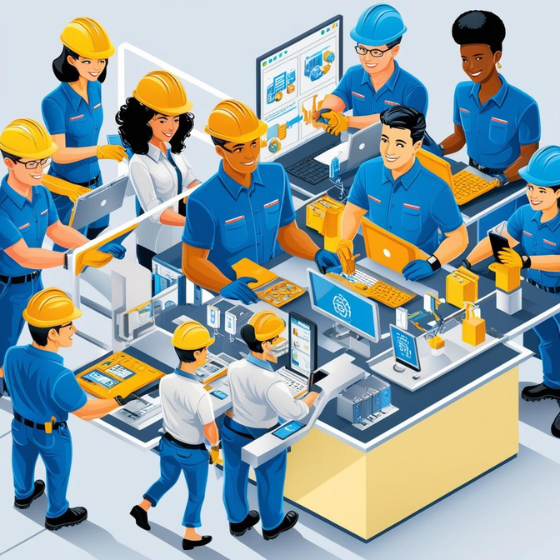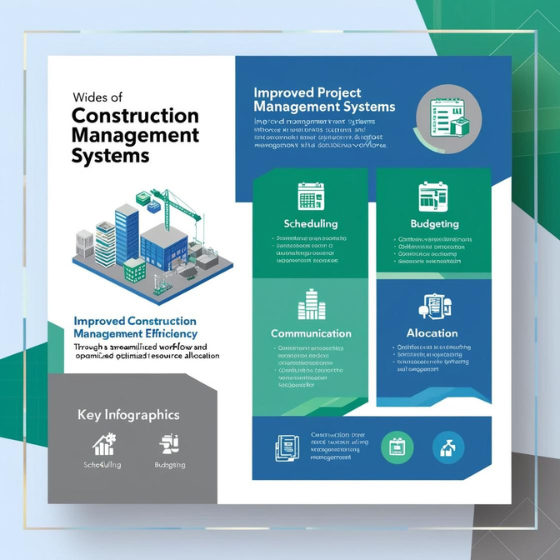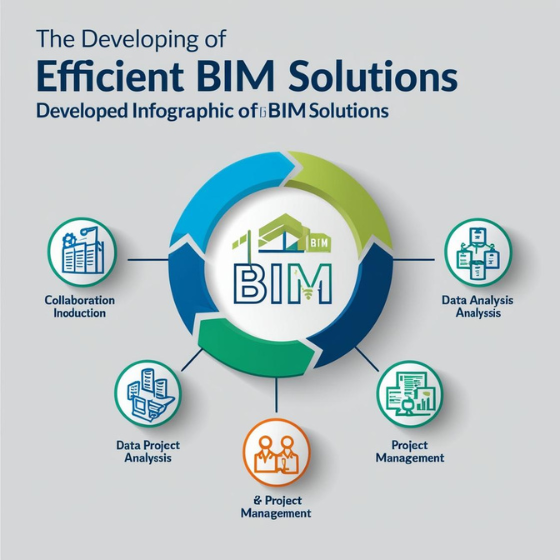Best Practices for Developing Construction Management Systems
The construction industry is highly dynamic, involving multiple stakeholders, tight deadlines, and a need for precise coordination. To manage these complexities, Construction Management Systems (CMS) have become indispensable. However, building an efficient CMS is no small feat—it requires meticulous planning, a deep understanding of user needs, and adherence to industry best practices.
In this blog, we’ll dive into the best practices for developing construction management systems, focusing on how to create a tool that enhances project efficiency, reduces costs, and fosters collaboration.
Why Are Construction Management Systems Essential?
Before we delve into best practices, let’s understand the importance of CMS. A well-designed CMS:
- Centralizes Information: Combines schedules, budgets, blueprints, and reports into one platform.
- Improves Collaboration: Enables real-time communication among architects, contractors, and project managers.
- Enhances Decision-Making: Offers data insights to optimize workflows and mitigate risks.
- Reduces Costs and Delays: Streamlines operations, leading to better cost control and timely project delivery.
Given these benefits, developing a robust and user-friendly CMS is crucial for businesses looking to gain a competitive edge in the construction industry.
Best Practices for Developing Construction Management Systems
1. Understand User Needs Thoroughly
Start by gathering input from the key stakeholders who will use the system. This includes project managers, engineers, contractors, and clients. Understanding their pain points and daily workflows will guide the system’s design and functionality.
Key Steps:
- Conduct user interviews and surveys.
- Map out existing workflows and identify inefficiencies.
- Prioritize features based on user feedback, such as task management, resource tracking, or real-time communication.
Pro Tip: Create user personas to ensure the system addresses the needs of different roles within a project.
2. Focus on Customization and Scalability
Every construction project is unique, and so are the requirements of different organizations. A successful CMS should be:
- Customizable: Allow users to tailor workflows, dashboards, and reporting formats to fit their specific needs.
- Scalable: Ensure the system can handle growth, from small residential projects to large commercial developments.
By incorporating flexibility, you ensure the CMS remains relevant as business needs evolve.
3. Integrate with Existing Tools
Construction teams often rely on various software solutions, such as Building Information Modeling (BIM), enterprise resource planning (ERP), and accounting tools. Developing a CMS that seamlessly integrates with these systems eliminates redundancies and improves efficiency.
Example Integrations:
- Link BIM software for 3D modeling and design updates.
- Sync with ERP platforms for real-time budget tracking.
- Integrate scheduling tools for automatic task updates.
This interoperability ensures a smoother workflow and reduces the learning curve for users.
4. Prioritize User-Friendly Design
A CMS that is too complicated can lead to low adoption rates, negating its intended benefits. Prioritizing an intuitive, user-friendly interface ensures that all stakeholders, regardless of technical expertise, can navigate and utilize the system effectively.
Best Practices for UI/UX:
- Use clean, clutter-free layouts.
- Incorporate drag-and-drop functionality for tasks like scheduling or resource allocation.
- Include mobile-friendly designs for on-site access.
- Offer onboarding tutorials and help documentation.
Pro Tip: Test the interface with actual users during development to gather feedback and make improvements.
5. Ensure Real-Time Data Access
Construction projects often require quick decisions based on real-time data. A CMS should provide instant access to the latest information, including:
- Task progress updates.
- Budget and resource usage.
- Risk assessments and alerts.
Features to Include:
- Dashboards that display live project metrics.
- Mobile access for on-site teams to update and retrieve data.
- Notifications for critical updates or potential issues.
Real-time access fosters transparency and ensures everyone stays on the same page, regardless of location.
6. Incorporate Advanced Analytics
Data-driven decision-making is a game-changer for construction projects. Incorporating analytics tools into your CMS allows users to:
- Monitor key performance indicators (KPIs), such as productivity and budget adherence.
- Identify patterns and inefficiencies in workflows.
- Forecast costs, timelines, and potential risks.
By turning raw data into actionable insights, analytics tools empower teams to optimize their processes and deliver better results.
7. Emphasize Security and Compliance
A CMS stores sensitive project data, from budgets and contracts to client information. Ensuring robust security measures is critical to protecting this data from breaches or unauthorized access.
Best Practices for Security:
- Use encryption for data storage and transmission.
- Implement role-based access controls to limit data access.
- Regularly update the system to address vulnerabilities.
Additionally, the CMS should help teams maintain compliance with industry regulations, such as OSHA safety standards or local building codes.
8. Provide Comprehensive Training and Support
Even the most advanced CMS can fail if users don’t know how to use it effectively. Offering training and ongoing support ensures teams can leverage the system’s full potential.
Training Tips:
- Host workshops and training sessions during implementation.
- Provide video tutorials, user guides, and FAQs.
- Offer 24/7 technical support to address user issues.
Continuous support and updates also ensure the system remains relevant as user needs evolve.
9. Optimize for Mobile Accessibility
Construction professionals often work on-site and require access to the CMS while away from their desks. A mobile-friendly CMS allows them to:
- Update task progress.
- Report issues and upload photos from the construction site.
- Communicate with team members in real time.
Key Considerations for Mobile Design:
- Ensure the interface adapts seamlessly to smaller screens.
- Include offline access for areas with poor connectivity.
- Keep features streamlined for faster navigation.
10. Iterate and Improve Regularly
The construction industry is constantly evolving, and so are the needs of CMS users. Regular updates and improvements ensure the system remains effective and competitive.
Steps for Continuous Improvement:
- Gather user feedback through surveys and performance reviews.
- Monitor system usage to identify underutilized features.
- Keep up with industry trends and incorporate new technologies, such as AI or IoT.
The Role of Sodio in Developing Custom CMS Solutions
At Sodio, we specialize in building tailored construction management systems that address the unique challenges of your projects. Here’s what makes us the ideal partner for your CMS development:
- Custom Solutions: We design systems that align with your workflows and goals.
- Expert Integration: Our CMS solutions integrate seamlessly with BIM, ERP, and other tools.
- Scalable Platforms: Whether you’re managing small projects or large-scale developments, our systems grow with your business.
- User-Centric Design: We prioritize intuitive interfaces that simplify operations for your team.
Final Thoughts
Developing a successful construction management system requires careful planning, user-focused design, and adherence to industry best practices. By following these guidelines, you can create a CMS that not only streamlines your operations but also enhances collaboration, reduces costs, and ensures project success.
Looking to build a custom CMS for your business? Contact Sodio today to discuss your unique requirements and let us help you transform your construction management processes.
